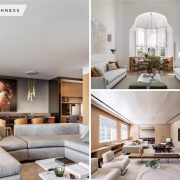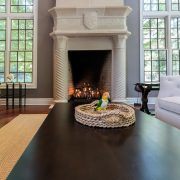There is a high demand for architect part-time jobs on Jooble and other online platforms, so individuals seeking a career in this area must be well-grounded in the design process.
The section below will look at five steps to design your dream house.
Step 1. Engage Your Clients
The first step designers typically embark upon when initiating a project involves engaging clients to glean insights into their personalities, genuine requirements, and aspirations. While designing a personal space, it’s imperative to commence from a common starting point by identifying your needs and aspirations. This entails delving into introspection, which is the foundation for discovering solutions. However, it’s important not to fixate on aesthetics solely; functional considerations are equally vital. Thus, it becomes crucial to pose questions to oneself and discern the facets that warrant change or enhancement.
These inquiries are a compass for unearthing the solutions that align with our most profound aspirations. Some of these pivotal questions might encompass the overarching purpose behind the impending renovation, the emotional ambiance one desires within the space, the primary users of the area, areas that necessitate improvement, the range of activities conducted within the space, and the financial parameters outlined by one’s budget.
Step 2. Define Your Unique Style
The second crucial step entails the process of defining your unique style. In this phase, discerning what resonates with you and encapsulates your identity becomes pivotal, as this will serve as a guiding light throughout the design journey. By establishing a clear sense of personal style, you equip yourself with a compass to navigate the various stages of the creative process, enabling you to make decisions that culminate in a harmonious and cohesive outcome.
A valuable technique to facilitate this style-defining endeavor is creating an inspiration board, often called a mood board. This composition is an amalgamation of visual elements, including images, illustrations, colors, textures, and patterns, all of which are sources of inspiration.
Mood boards can be fashioned through various methods, with Photoshop being a popular choice for those well-versed in graphic design. However, for a user-friendly and accessible alternative, platforms like Canva provide an excellent solution. With Canvas’s intuitive interface, you can adeptly organize and arrange your chosen images, creating an engaging mood board that encapsulates your artistic vision. In a matter of minutes, you can visually communicate the essence of your style, setting a clear direction for your design journey.
Step 3. Understand Your Budget
Understanding your budget is an all-encompassing strategy when considering a wide spectrum of expenditures. This includes everything from the costs associated with project supplies, materials, and installation, to the expenses linked with transportation and any additional miscellaneous items that might accumulate over time.
A prudent suggestion is to meticulously structure a step-by-step blueprint of the renovation process’s tasks. A granular breakdown, leaving no detail unaccounted for, is the bedrock for assembling a meticulously accurate budget. It’s imperative to allot a slight margin for unforeseen and supplementary expenditures, thereby fostering a financial cushion to accommodate unexpected twists.
Understanding your budget is pivotal, coupled with an assessment of priorities. This calls for an astute investment strategy, channeling resources into elements that hold the potential to effectuate substantial change within the space, all the while remaining aware of the eventual aesthetic outcome. Note that this entire process is an evolving journey in which you can progress at a pace aligned with your constraints.
Step 4. Plan A Layout
The next step in this intricate design journey involves meticulously planning a layout that seamlessly accommodates all your requisites. This encompasses the selection of wall colors, flooring materials, and ceiling designs. Simultaneously, a comprehensive lighting scheme needs to be devised, encompassing all overarching aspects of the space’s ambiance.
During this phase, arranging furniture placements and generating a floor plan that aligns precisely with the previously identified needs becomes imperative. This necessitates an exacting measurement of the available space, enabling furniture distribution that pinpoints the specific dimensions required for elements like sofas, tables, and chairs. Ensuring ample circulation space is accounted for is paramount, guaranteeing unhindered movement throughout the room. Taking the time to meticulously blueprint your spatial arrangement is integral, culminating in an outcome that caters to your functional requirements.
Step 5. Procure Samples Of The Various Elements That Constitute Your Designs.
Finally, taking a moment to procure samples of the various elements that constitute your design vision is prudent. Collect samples of your chosen paint colors, flooring materials, fabric swatches, patterns, and any other intricate details or materials contributing to your envisioned space. Obtaining these samples before making definitive decisions holds substantial value, as it allows you to witness how all these disparate elements harmonize within the space you are actively shaping.
This preemptive sampling proves indispensable, allowing you to perceive these components collectively within the real spatial context you’re crafting. This undertaking also involves accounting for the natural light that permeates the space at varying times of the day. The interplay of light and shadow significantly influences our perception of materials and colors. Given that our interpretation of these facets can fluctuate based on different lighting conditions, this exercise becomes instrumental in fine-tuning your selections.
Moreover, this preparatory phase offers you the flexibility to entertain alterations should you wish to refine any aspects without encountering hindrances. Once you’ve solidified your plan and are confident in its configuration, you’re primed to commence your shopping spree.
Conclusion
You’ve traversed an extensive journey, meticulously compiling ideas, notes, and guidelines to fortify your resolve. Approach this phase with assurance, as your vision is now comprehensively delineated. By meticulously adhering to these outlined steps, you can confidently ensure the acquisition of the most optimal and requisite designs essential for realizing your envisioned dream house.





















